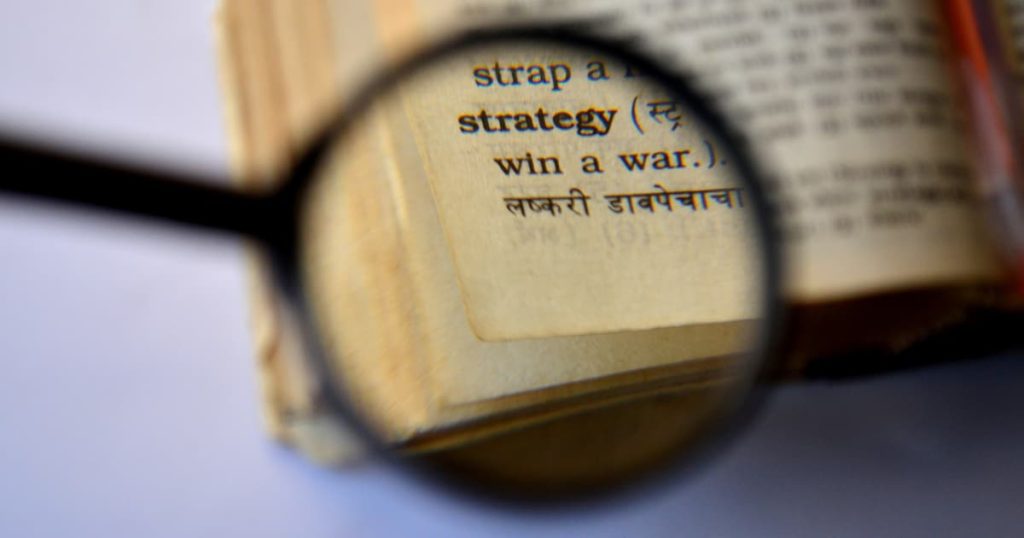Helpful Approaches for the Pathological Demand Avoidance (PDA) Profile of Autism
Any child with Autism Spectrum Disorder (ASD) requires support and accommodations in order to thrive. If your child also displays the Pathological Demand Avoidance (PDA) behavioural profile of Autism, then additional helpful approaches will also be required.
The PDA Society has done amazing work in clearly laying out some very specific PDA support strategies and they use an unlikely collaborator, a giant panda, to make these strategies easy to remember.

What are the PDA PANDA Support Strategies?
The PDA Society has chosen the giant panda as their ambassador because, like PDA individuals, giant pandas require very specific support and accommodations to thrive.
It’s also super handy that the word ‘PANDA’ spells out a helpful mnemonic to help you remember the main PDA strategies.
The PDA PANDA Support Strategies are as follows:
Pick Battles
Anxiety Management
Negotiate & Collaborate
Disguise & Manage Demands
Adaptation
When I first discovered the PDA PANDA support strategies I was quietly encouraged. I was already using a number of these strategies successfully with my PDA child so I figured I must be on the right track.
Years of trial and error had led me to find ways to positively engage with my PDA child.
Funnily enough, that is exactly where the PDA PANDA support strategies have come from too – many years of trial and error by PDA parents and the subsequent sharing of helpful approaches in support groups has ultimately resulted in the clear, specific support strategies outlined in the PDA PANDA approach.
How to use the PDA Panda Support Strategies for Pathological Demand Avoidance (PDA)
Knowing and understanding the PDA PANDA support strategies is one thing but putting them into practice is something else.
That’s why I want to share with you some real-life examples of the PDA PANDA support strategies from my years parenting a PDA child.
Firstly, I want to emphasise that these support strategies are to be used just as the name suggests – for support.
They are not a tactic to manipulate your PDA child into being compliant or ‘normal’ or behaving how you think they should behave. Nor are they an excuse to let your PDA child control every aspect of your lives.
The aim should be to use the strategies to support the best outcome in any given situation. Sometimes this outcome may be more swayed towards what your PDA child wants, sometimes more swayed towards what you want, and sometimes, right down the middle.
Let’s begin.
P = Pick Battles
Parents of PDA children can often find themselves in a situation where they are constantly battling their child’s anxiety.
What is important to remember is that a PDA child is also constantly battling their anxiety and when they are forced to battle against their parents as well, this leads to a simply overwhelming amount of stress.
A simple request for your child to complete a seemingly mundane task can escalate very rapidly into a terrible meltdown leaving both parent and child perplexed, hurt and overwhelmed.
Traditional parenting strategies might encourage consistency, along with clear communication of expectations, and consequences for non-compliance, but try this with a PDA child and you are probably going to elicit a trauma response.
Picking your battles means letting your child off the hook for some things, in order to have a better chance at tackling other, more important, things.
Ways you can do this include minimising rules, enabling your PDA child to have choice and control, explaining reasons, and accepting that some things can’t be done.
I use all of the above strategies with my PDA child, but ‘explaining reasons’ is probably the one I rely on the most.
Autistic children have incredibly logical brains and nothing beats a solid, logical argument.
I barely say a word to my PDA child without prefacing it with a logical reason.
Instead of “Put on a jumper”, I say,
“I can see the wind blowing the trees outside, maybe you should take a jumper with you.”
Instead of “Clean up this mess”, I say,
“Grandma is coming over and there are toys all over the floor. I really don’t want her to trip over one and fall, can I help you pick them up and put them away?”
Instead of “Time for a bath”, I say,
“Remember your favourite TV show is going to be on later, maybe you could have your bath now.”
Instead of “Hurry up!”, I say,
“Don’t take too long, dinner will be ready soon.”
Giving a reason doesn’t mean your child’s compliance is guaranteed, but I usually find they are more willing if a reason is presented. As long as they see the reason as valid and relevant to them (you might not have as much success if you give them reasons that are valid and relevant to you).
Also, even if they initially refuse, they may consent a short while later after having more time to consider your explanation.

A = Anxiety Management
Anxiety is a key driver of any PDA child’s behaviour. The best outcomes are achieved when anxiety is kept to a minimum.
Some assume it’s an easy fix – find out what a child is anxious about, allay that anxiety and things should improve, right?
I wish.
PDA anxiety can be extremely complex. It’s not unusual for PDA children to even be anxious about revealing what they are anxious about and may deny or misdirect when probed by parents trying to discover the root of the fear.
This can be incredibly tricky for a parent to navigate.
Emerging evidence suggests a fear or intolerance of uncertainty may be responsible for the high levels of anxiety and resulting behaviours of PDA.
Being Autistic, PDA children may also experience underlying anxiety due to social or sensory challenges they may have.
Managing uncertainty and recognising underlying social and sensory anxiety related to ASD are key strategies parents of PDA children can utilise to manage their child’s anxiety.
Then they can think ahead about upcoming situations their child may be in and prepare them accordingly.
A real-life example of the way I do this for my PDA child is by finding pictures on the internet of places my PDA child is going to visit.
If they are invited to a birthday party at a play centre or a park, I find the website and let my child explore and look at the pictures.
Exploring a website can go a long way to answering questions about what they will see and do at the location, and when my child shows up, finding familiar buildings or features of the landscape helps them settle in.
I’ve also done this for school excursions, camps and family day trips.
Having a picture in their mind of where they are going, how long it will take to get there, and what will happen once they are there can go a long way to managing anxiety for a PDA child.

N = Negotiate & Collaborate
Negotiation and collaboration between parents and children is not something that is actively encouraged in traditional parenting methods.
Many PDA parents have been told that an anxious and uncertain child needs the safety and security of a parent who is consistent and will not budge. Oh how that advice has led to simply terrible outcomes for me and many others.
Control is something your PDA child is always seeking to counteract the uncertainty. A parent having all of the control all of the time is something a PDA child simply cannot tolerate, just as a child having all of the control all of the time would be intolerable to a parent – you have to meet somewhere in the middle.
The best strategies to enable negotiation and collaboration are to keep calm and focus on fairness and trust. Be proactive with your negotiation and collaboration, start before things get heated rather than after (when neither party really wants to back down).
A great real-life example of how I do this with my PDA child is around bathing.
The demand of having a bath would result in a meltdown for my PDA child every. single. time. This went on for years (I’m not exaggerating – I wish I was!).
I got to the point where I simply couldn’t continue fighting with my child. I had tried all the usual strategies, now it was time to try something unusual (this was before I knew about PDA so I was flying by the seat of my pants).
My PDA child and I sat down with a pen and paper and we started to negotiate:
I wanted them to have a bath everyday, they wanted to have a bath never. I suggested every second day, we settled on 3 days each week (more than fair for both parties).
I let them pick the days. I couldn’t have cared at this point if they chose three bath days in a row followed by four days of stinkyness (just having three baths a week would be a HUGE achievement). Thankfully my child suggested Tuesdays, Thursdays and Sundays (see, they can make great choices when given the chance).
I wanted hair washed each bath time, we agreed on 2 out of 3. Again I let them pick the days that hair would be washed each week.
I asked my child to write the agreement down on the paper in their own handwriting. Where my child baulked at writing an agreement down, I knew they weren’t happy, and we renegotiated.
The written agreement went on the fridge.
The very next scheduled bath time my child, of course, refused (force of habit). So I calmly pointed to the agreement (written in their own hand) and reminded them that we worked on it together and it was more than fair.
It hasn’t always been perfect, but we have been using that negotiated bath time schedule for two years now and bathing has become far less stressful for both of us.

D = Disguise & Manage Demands
If your PDA child is anxious and overwhelmed by demands, then another helpful approach is to keep demands at a level your child can tolerate, or to even disguise them entirely.
How you word or position requests can make a difference. Using declarative language or statements rather than questions is helpful, as is offering to help your child complete tasks that they find demanding.
I’ll refer again to the examples I used for Picking Battles:
“I can see the wind blowing the trees outside, maybe you should take a jacket with you.”
See how this is a statement – no question has been asked here.
“Grandma is coming over and there are toys all over the floor. I really don’t want her to trip over one and fall, can I help you pick them up and put them away?”
See how I asked ‘can I help you’ rather than ‘can you help me’? It’s just a one-word difference but the chances of compliance in the first instance are much higher.
My child has a regular chore of emptying the dishwasher (chores – I know right? Look what amazing things can happen with the right approach!).
I ALWAYS ask “Can you help me empty the dishwasher”, never “Please empty the dishwasher” or “Can you empty the dishwasher?”.
I empty the cutlery basket and my child puts away the rest of the dishes.
If I were to use the latter phrases, or insist my child empty the whole dishwasher by themselves, my PDA child will always become upset or even refuse.
Sometimes even with the right approach my child is still avoidant – emptying the dishwasher then goes in the ‘Pick Your Battles’ category and I accept that today it can’t be done.
Often it is necessary to monitor a PDA child’s tolerance for a demand and adjust demands accordingly.
My PDA child finds drinking demanding. This is a perfect example of an ordinary everyday demand that most of us would carry out without a second thought, but my PDA child is highly avoidant about keeping their body hydrated.
I can’t simply say “That’s all right sweetie, I know it’s hard for you, don’t worry you don’t have to drink anything.” – their wellbeing is at stake.
This child will come home from school on a sweltering hot summer’s day with a full drink bottle and I get deeply concerned for my child’s health when I realise they haven’t had a drink all day.
But the more I prod or suggest or ask, they more they resist.
One day, deeply frustrated after pouring out the contents of my child’s drink bottle after school everyday that week, I decided to only fill it half way. I was thinking of myself really, annoyed at the waste of the expensive juice in the drink bottle (another vain attempt to encourage my child to drink).
Imagine my surprise when the drink bottle came home empty that day.
What a lightbulb moment! I realised that a full drink bottle held too much expectation for my PDA child and the demand to drink ALL of it meant they couldn’t drink ANY of it.
Wow.
Ever since that day, my PDA child’s drink bottle goes to school half full. Some days they ask for more, so I fill it ¾ of the way.
I constantly monitor the drink level, if it comes home empty – more tomorrow, if it comes home untouched – less tomorrow.
The added bonus of not having to prompt my child to drink at home what they didn’t drink at school takes the pressure off and has allowed my child to drink more than they used to (though still probably not as much as I’d like).

A = Adaptation
The final PDA PANDA support strategy is for you, as a parent, to adapt to your child’s PDA.
This comes with knowledge and practice.
Helpful approaches include using distraction, humour, novelty or roleplay when your child is overwhelmed.
You should always be flexible, have a plan B, and allow plenty of time.
I utilised all of these strategies just last week when my PDA child had to attend an important medical appointment.
My child definitely did not want to go and was highly overwhelmed and avoidant. We had already had one very big meltdown but I allowed plenty of time for recovery before the appointment.
I was flexible and agreed to a special toy reward for my child, and my plan B was my sister who came along so if my child couldn’t go in and confer with the specialist, at least I could.
We made it to the waiting room and had one very last uncertainty to endure – how long would it be before our name was called.
I hadn’t prepared for this but luckily, I came up with an idea. I took out my mobile phone and looked up the Facebook page of my child’s favourite celebrity and started scrolling, all the while making sure it was within my child’s view.
My child spotted the feed and we sat reading the Facebook page while we waited. The distraction worked perfectly.
With the waiting time spent exploring an interest rather than allowing anxiety to fester, there was a much better transition when the appointment started.

Final Comments on the PDA Panda Support Strategies
The PDA PANDA support strategies of picking battles, anxiety management, negotiation and collaboration, disguising and managing demands, and adaptation are the most helpful approaches for the PDA behavioural profile of Autism.
I hope hearing my real-life examples of the PDA PANDA support strategies has given you a few ideas for tailoring these strategies to your PDA child.
Do you have any real-life examples of how you have used the PDA support strategies with your PDA child? They can be really helpful to other parents of PDA children.
Share them in the comments below.







thanks. this is one of the better articles explaining the PANDA application and the real life examples give it real clarity.
My child has nose sensitivities, in particular he can’t stand the sounds of someone eating in the same room as him. So he wears ear muffs if he would like to stay in the room.
If I was to say ’Put your ears (muffs) on mate, im about to eat’ it can be received very harshly with a loud ’WAIT!!!’ Then a very procrastinated effort to put on his ears while I or the whole family wait.
So now I understand his PDA a little better, simply making a statement about what im doing goes down WAY better, ‘Wow dinner looks yum, im so hungry, let’s all eat soon’. He will pick up all the cues and calmly and efficiently put his ear muffs on. (Most of time 😉 lol)